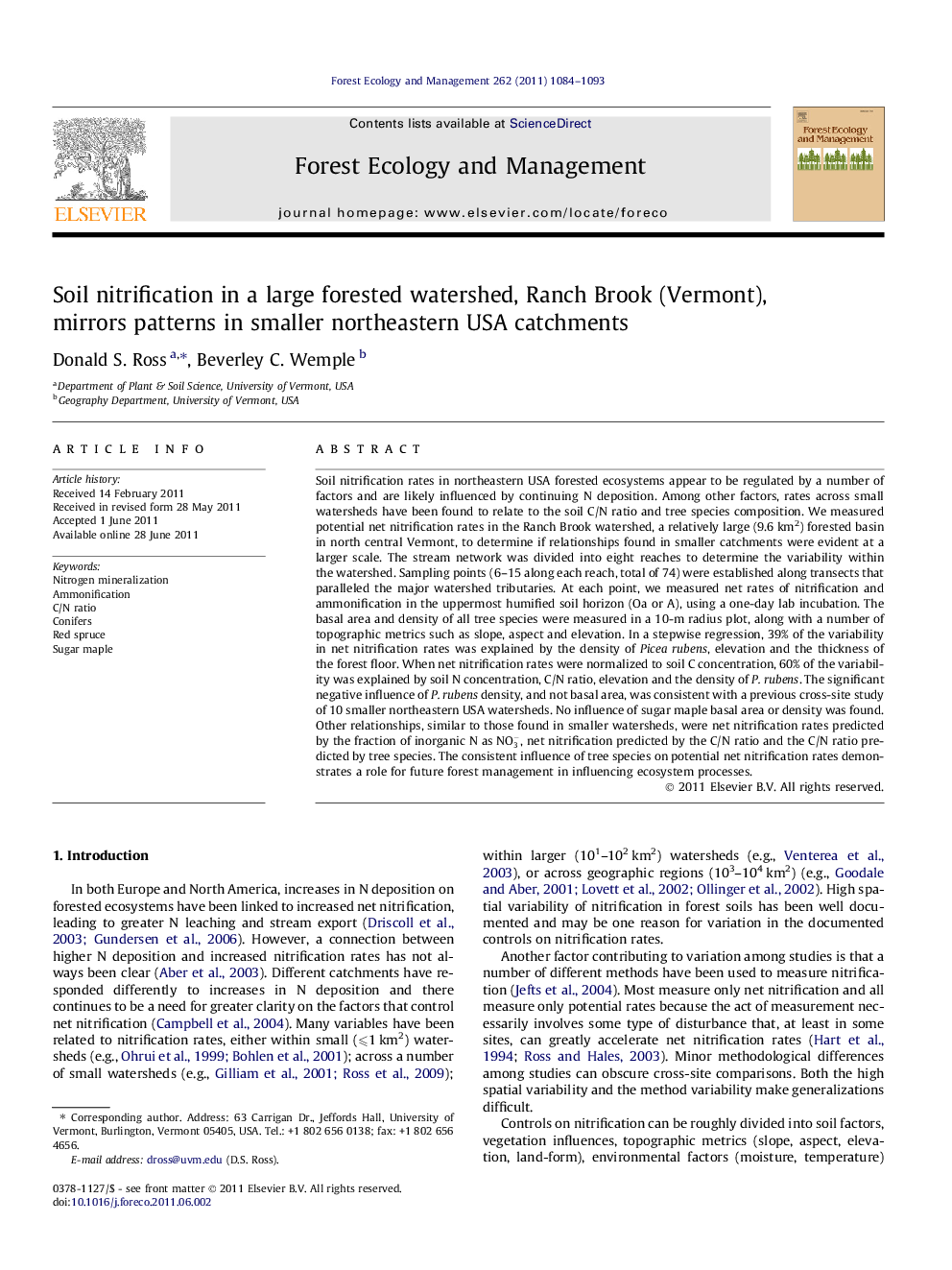| کد مقاله | کد نشریه | سال انتشار | مقاله انگلیسی | نسخه تمام متن |
|---|---|---|---|---|
| 87852 | 159269 | 2011 | 10 صفحه PDF | دانلود رایگان |

Soil nitrification rates in northeastern USA forested ecosystems appear to be regulated by a number of factors and are likely influenced by continuing N deposition. Among other factors, rates across small watersheds have been found to relate to the soil C/N ratio and tree species composition. We measured potential net nitrification rates in the Ranch Brook watershed, a relatively large (9.6 km2) forested basin in north central Vermont, to determine if relationships found in smaller catchments were evident at a larger scale. The stream network was divided into eight reaches to determine the variability within the watershed. Sampling points (6–15 along each reach, total of 74) were established along transects that paralleled the major watershed tributaries. At each point, we measured net rates of nitrification and ammonification in the uppermost humified soil horizon (Oa or A), using a one-day lab incubation. The basal area and density of all tree species were measured in a 10-m radius plot, along with a number of topographic metrics such as slope, aspect and elevation. In a stepwise regression, 39% of the variability in net nitrification rates was explained by the density of Picea rubens, elevation and the thickness of the forest floor. When net nitrification rates were normalized to soil C concentration, 60% of the variability was explained by soil N concentration, C/N ratio, elevation and the density of P. rubens. The significant negative influence of P. rubens density, and not basal area, was consistent with a previous cross-site study of 10 smaller northeastern USA watersheds. No influence of sugar maple basal area or density was found. Other relationships, similar to those found in smaller watersheds, were net nitrification rates predicted by the fraction of inorganic N as NO3-, net nitrification predicted by the C/N ratio and the C/N ratio predicted by tree species. The consistent influence of tree species on potential net nitrification rates demonstrates a role for future forest management in influencing ecosystem processes.
► Net nitrification rates showed similar patterns in large and small watersheds.
► Tree species makeup was the most important factor explaining differences in rates.
► Red spruce density was significantly inversely related to net nitrification rates.
► Presence of sugar maple was not, by itself, a predictor of net nitrification rates.
► The C/N ratio, related to tree species, was also a predictor of nitrification rates.
Journal: Forest Ecology and Management - Volume 262, Issue 6, 15 September 2011, Pages 1084–1093